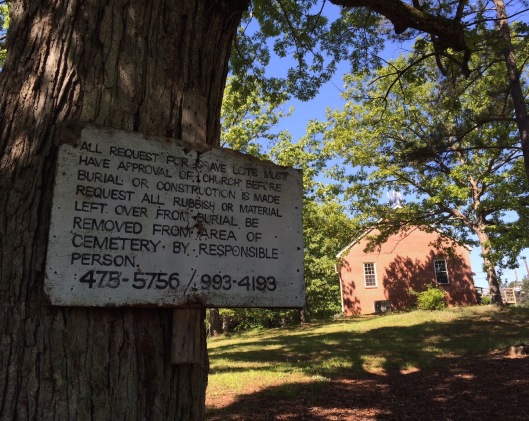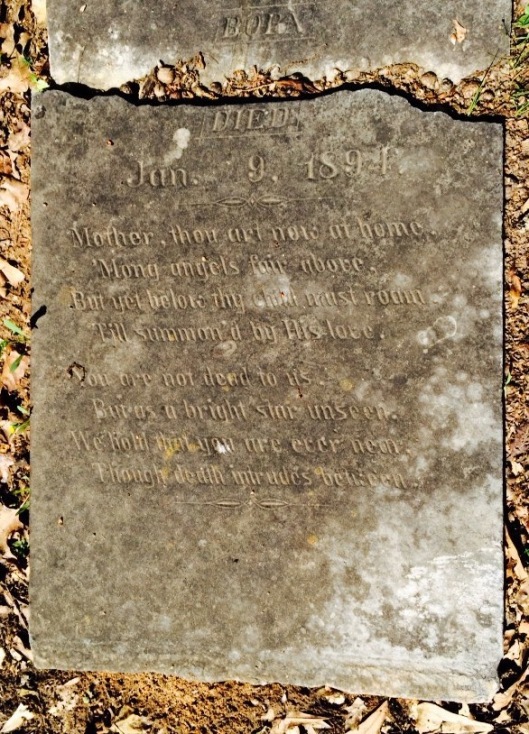Those of you who’ve followed my blog for a while may remember one of my first blog posts about a young soldier who was killed in action during the Vietnam War. In honor of Memorial Day, I want to revisit that post and add some things I have since learned about Jerry Davis since I wrote it.
I had not been a Find a Grave photo volunteer for long when I took the request to photograph his grave. Jerry is buried in Melwood Cemetery in Stone Mountain, Ga. At that time, I’d never been to Melwood before, although I have passed it many times. I was a little nervous because big cemeteries then intimidated me. That’s no longer the case but it was true then.
 Fortunately, while Melwood is indeed large, it is still locally owned, not bought out by a large chain (yet). The ladies in the office were more than happy to locate Jerry’s grave for me and one of them even drove over to it (with me following in my car) so I could see exactly where it was. He is buried beside his parents.
Fortunately, while Melwood is indeed large, it is still locally owned, not bought out by a large chain (yet). The ladies in the office were more than happy to locate Jerry’s grave for me and one of them even drove over to it (with me following in my car) so I could see exactly where it was. He is buried beside his parents.
Thanks to Facebook, I was able to reach out to the folks of Tucker and ask if they’d known Jerry in their youth. Turns out, quite a few had and remembered him well.
Stephen Smith, a Tucker resident who served for two years in Vietnam and 20 years in the U.S. Air Force, was a friend of Jerry’s for many years. He posted on Facebook: “I went to school with Jerry, Tucker Elementary and Tucker High. In elementary school, he helped me raise and lower the American Flag each day and fold it and lay it in the office.”
As a little girl, Donna England Dahlgren remembered Jerry as he helped her and her classmates cross the street every day. “He was a patrol who helped us cross the street walking to school when I was in the fourth grade,” she shared.
Donny Hammond (who has since passed away) also knew Jerry and left a comment. “I met Jerry before we moved to Tucker in about 1959, 1960 at Twin Brothers Lake . He liked to fish as much as I did. My brother and I would go just about every Saturday if we had the cash , Jerry and his brother did the same. His parents owned Davis Sheet Metal Works. He was very quiet and kept to himself. He also like most of us boys loved fast cars.”

Like most of the people whose graves I photograph, Jerry died before I was born. But his death struck a chord in me as a mother.
According to Jerry’s Find a Grave memorial, he wasn’t even 20 yet when he enlisted in March 1966. He chose the United States Marines, a branch of the armed services noted for its toughness of character. Looking at his picture, I wonder what was going through his mind before he left everything he knew behind in a small Georgia town for an uncertain future thousands of miles away.
After he arrived in Vietnam, Jerry was assigned to Company B, 1st Battalion, 7th Marines, 1st MAR DIV (Rein) FMF. Records indicate he was an antitank assaultman. He had only been in Vietnam a few days when his life was taken by the enemy.
 Jerry’s memorial explains how he died. “Near the Hoa Ham hamlet in Dai Loc District a LP (Listening Post) inside the Company perimeter wire, [Davis] received an incoming grenade and five rounds of small arms fire resulting in LCpl Davis being killed in action by the enemy rifle fire.”
Jerry’s memorial explains how he died. “Near the Hoa Ham hamlet in Dai Loc District a LP (Listening Post) inside the Company perimeter wire, [Davis] received an incoming grenade and five rounds of small arms fire resulting in LCpl Davis being killed in action by the enemy rifle fire.”
By looking on Ancestry.com, I discovered that Jerry’s older brother died in 1965. He wasn’t in the military. I didn’t know the cause of his death back then but Jerry Head solved that mystery for me with a comment he left on Facebook: “We lived across the street from Jerry, Eddie and Diane [their sister]. Eddie was killed in a car wreck, I believe it was on Frazer Road, not far from their Grandma.”
Eddie was only 23 when he died. I wonder if he and Jerry played “war” as kids in the backyard. When they got older, did they talk about enlisting together? Or was it Jerry’s dream alone to become a Marine?
Stephen Smith was rocked by the news of Jerry’s death. “We were such good friends, my parents would not tell me he had gotten killed until I got back.”
When I was single, Jerry’s story wouldn’t have touched me as deeply. Because now I have a son myself, even though he’s only eight. But motherhood changes the lens through which you view life. If I knew my son was only going to live to the age of 20 and end up being shot to death halfway around the world, it would tear me to pieces.
I think of Jerry’s mother, Martha, as she watched her sons grow from little boys into young men. What did she say when Jerry told her he wanted to enlist? I picture her at his funeral, accepting the flag of our country. Having now lost both of her sons within a two-year period, one in a car accident and another in battle, her heart had to be broken.

LCp Jerry Davis made the ultimate sacrifice for his country. I discovered that many people remember him and know his story well.
I wish I could have met Martha. I would tell her, from one mother to another, that I’m sorry both of her boys died so young. That Jerry’s death in combat was not in vain, that his life did mean something. He was not just a casualty number on a blackboard.
And now, I would also tell her that Jerry is still fondly remembered by his friends from the Tucker High School Class of 1965. He lives in their hearts and memories forever. They know his story and will never forget it.
I hope you won’t either.






























